![]()
SLP Minimal Pairs
SLP Minimal Pairs gives Speech-Language Pathologists a mobile tool to help clients identify and correct phonological errors. It was developed by speech-language pathologists to target phonological disorders in children, pre-Kindergarten through 6th grade. The app includes three types of drills: Auditory Training, Contrast Drill and Target Drill. Each drill offers a choice of words within a phonological process. Word lists can be edited for each session. Students are presented with illustrations during each session and asked to say what they see.
App Features
- Automatically records client perfomance for each session.
- Appropriate for English speaking children; pre-school through sixth grade.
- Images depicting 367 words to facilitate discrimination and accurate production of speech sounds.
- Covers 8* commonly used phonological processes: Final Consonant Deletion, Fronting, Cluster Reduction, Prevocalic Voicing Gliding, Stopping, Depalatalization, Deaffrication and Gliding.
- Three practice formats include: auditory discrimination, contrast drill, and repetition drill.
- Progress monitoring in client history tracks improvement and allows users to observe improvement over multiple sessions.
- App gives the therapist maximum control of each session. All buttons are oriented near the therapist and away from the child.
- Supports VGA output.
*Note: Free version provides full functionality for Cluster Reduction - one of the eight processes - allowing you to fully test out the application and decide to purchase the remaining seven processes.
Research and References:
Minimal pair contrast words have been used in articulation intervention for many years (Fairbanks, 1960). Minimal pairs are word pairs that differ by only one phoneme (e.g., pat and bat) and are primarily used to demonstrate to children with phonological disorders the contrast between their production and the target word. They further demonstrate that a word with a substituted phoneme forms a different word with a different meaning. Treatment using minimal pairs is based upon communication breakdown when an incorrect word is produced secondary to a substitution, thereby interrupting the activity or game until the accurate phoneme and word are produced (Weiner, 1981). Barbara Hodson’s Cycles approach to treating phonological disorders contrasts the child’s actual production with a minimal-pair word to facilitate understanding of the semantic difference between the two productions (Hodson, 2007).
Fairbanks, G. (1960). Voice and Articulation Drillbook (2nd ed.). New York: Harper Brothers.
Hodson, B. (2007). Evaluating and enhancing children’s phonological systems: Research and theory to practice. Greenville, SC: Thinking Publications University.
Weiner, F. (1981) Treatment of phonological disability using the method of meaningful minimal contrasts: Two case studies. Journal of Speech and Hearing Disorders, 46, 97-103.
iPad App Screenshots
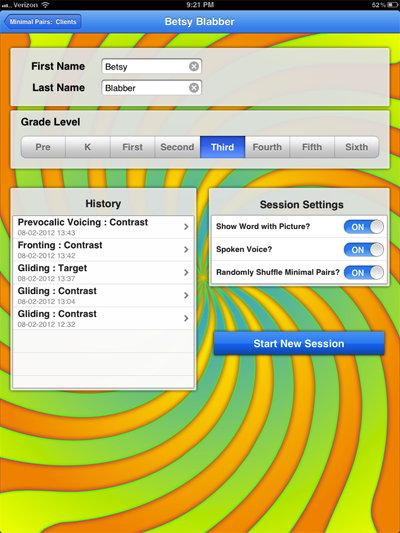
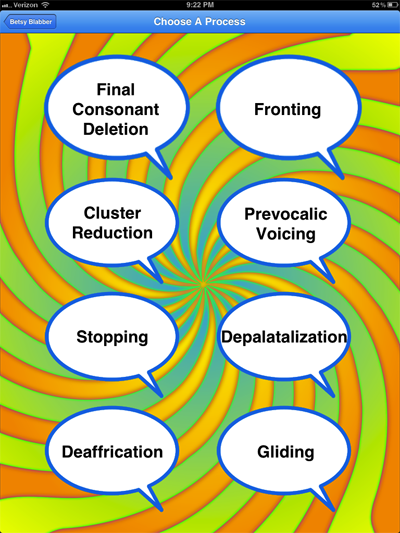
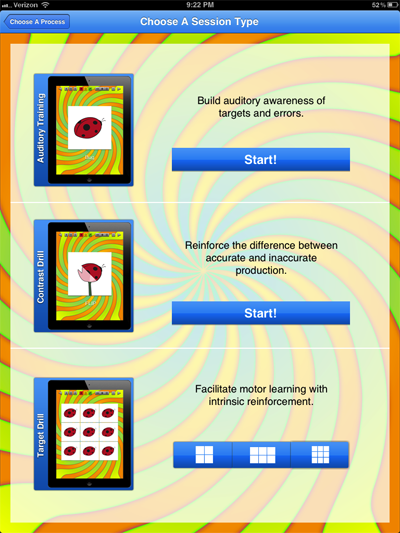
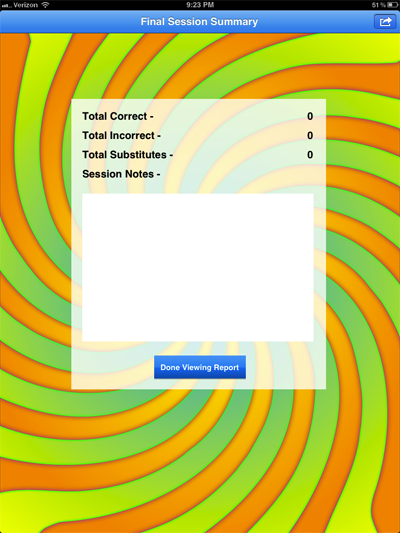

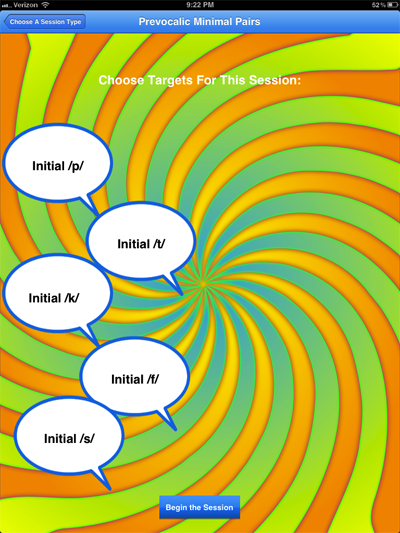
What Speech-Language Pathologists say about SLP Minimal Pairs
Worked Great
by Slp03
Cluster reduction fully worked for me (this is noted in the description). I like that i have the most control with the app and that the kiddos cannot chage screens of pictures easily. Plan on purchasing full app.
Great!
by JillAac
This app is just what I was looking for/needing!! The kids I work with LOVE it, and I love that I have control over the targets and can take data. The fast pace of the carryover phase is great and the kids love it! Love the fact that REAL words are used. It's evident that this app was not only well thought out, but developed by an SLP. Can't wait to see more apps from this developer
Slp minimal pairs
by Minimal pairs
I have been using this app with my students. It has excellent data recording capability and can be used with multiple students. I particularly like that it shows the correct vs. Incorrect items for each student. I would love to see them add place shifts (th and s, f and th, s and sh, etc.).

